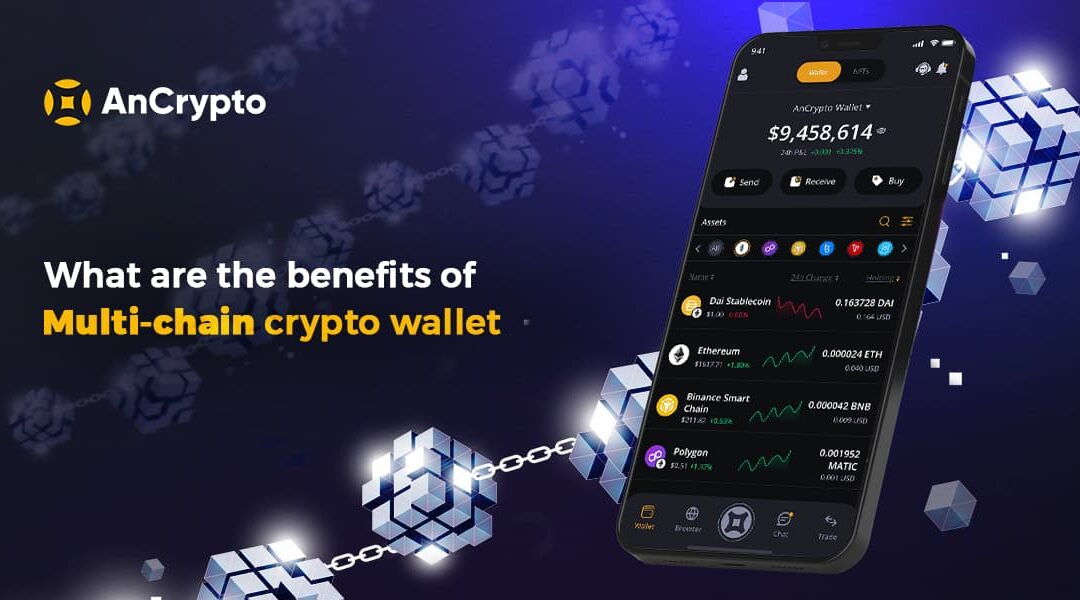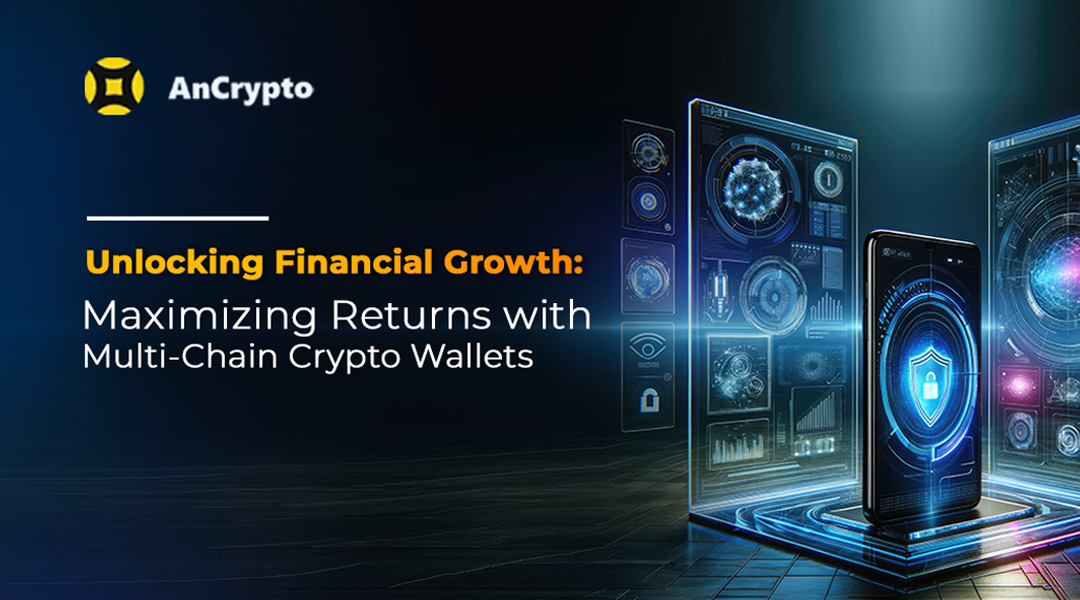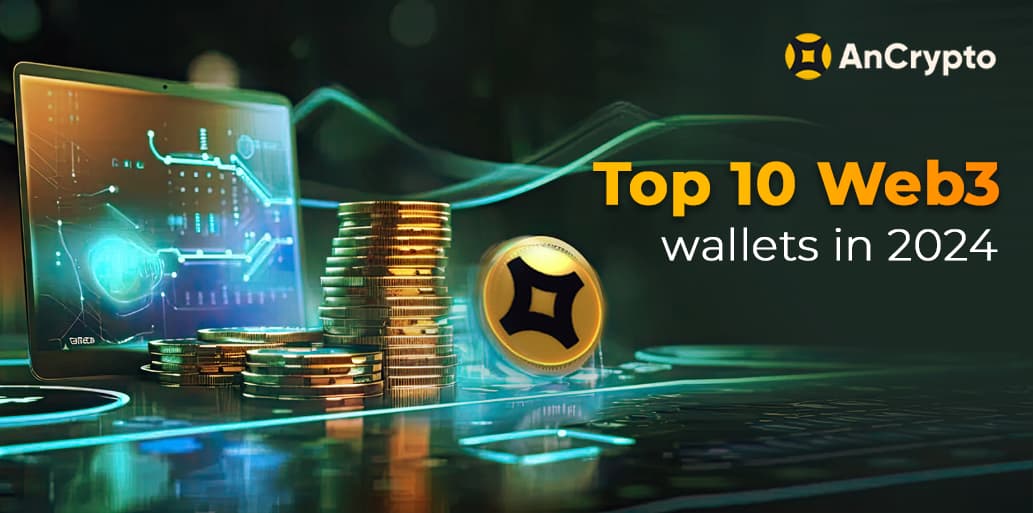Web3 and DeFi have witnessed a remarkable surge in the past few years. This flourishing development has not only driven the cryptocurrency market but has also significantly pushed the multichain crypto wallet industry. As we all know, the Web3 and DeFi landscape is a panorama of multiple blockchains. For people planning to get involved in crypto-based activities like trading, staking, buying, and selling digital assets, it has become essential to have a digital wallet.
Yes, of course, one can be involved in DeFi-related activities through exchanges, but to keep your crypto earnings safe, you need to have a wallet. While top-notch security protocols keep your assets secure, you can seamlessly interact with digital assets and tokens using the NFT wallet.
So what exactly is a multi-chain wallet?
As the name implies, the multi-chain wallet is connected to multiple blockchains, enabling users to transact and manage an array of crypto assets using one application.
Unlike the single-chain wallet that provides support for only one type of cryptocurrency, a multi-chain crypto wallet offers users the convenience of managing multiple crypto coins and tokens while having no control over their digital assets and private keys. This multi-chain access on a single platform offers easy diversification of the crypto portfolio and enables them to perform secure transactions.

Essential Components Of Multi-Chain Crypto Wallet
- Passphrase/Mnemonics –
- Wallet Address –
The passphrase/mnemonics of your multi-chain wallet are its password, which you need to access and manage the assets in it. You are not supposed to share the passphrase/mnemonics with anyone, or else you can end up losing all your assets.
Each blockchain has its wallet address. To transact on the network, you need the wallet address. However, as Web3 is growing so rapidly, some new additions like Chat and Pay Wallet are making the experience simpler for users by replacing the wallet addresses with a simple Username feature for quick crypto transactions.
Multi-Chain vs Cross-Chain – What Is The Difference?
Both technologies share a common goal: enabling users to transact across multiple blockchain networks.
- Multi-chain technology enables the use of multiple blockchains in a single ecosystem.
- Cross-chain technology enables transactions on different blockchain networks using smart contracts.
Features Of Multi-Chain Crypto Wallet
- Multiple Blockchain Support –
- Interoperability –
- Security –
- Non-custodial nature-
- Integrated Web3 Services –
While traditional crypto wallets are limited to a single blockchain, the multi-chain wallet accommodates a diverse range of crypto coins/tokens, allowing access to different networks. Therefore, one can efficiently manage all their assets together.
Along with supporting multiple cryptocurrencies, the wallet also offers seamless interaction between different blockchains, enabling users to perform cross-chain transactions within the app.
Multi-chain wallets prioritize the security of users’ assets and privacy by offering end-to-end encryption, two-factor authentication, and multi-signature support.
While using the multi-chain wallet, users are no longer required to share their sensitive information or private keys with third-party services. This reduces the risks of thefts and hacks as the users get total control over their assets and private keys.
The multi-chain crypto wallet offers users an opportunity to interact with Web3 dApps and DEX platforms. AnCrypto, for instance, integrated many popular DApps and DeFi platforms allowing users to trade their crypto assets across multiple blockchains in a few taps.
Why Multi-Chain Wallets Are Important?
The emergence of a multi-chain ecosystem represents an exciting step forward for Web3. With different blockchains optimized for various use cases, this diverse landscape fosters innovation and progress. The friendly competition between chains motivates developers to continuously refine and enhance their platforms.
At the same time, a multi-chain world provides tremendous advantages for users. Rather than being limited to apps on a single chain, they can now seamlessly access a rich array of services across various protocols. The complexity of bridging between chains is abstracted away, enabling intuitive user experiences.
Ultimately, the interoperability unlocked by a robust multi-chain infrastructure will profoundly expand what is possible in Web3. Both developers and users stand to benefit enormously from this more open and connected network of specialized blockchains working together in harmony.
Future of Multichain Crypto Wallet
The future landscape of blockchain technology remains unpredictable, but recent developments point to a potential drift toward multi-chain interoperability. Sophisticated bridging protocols, wrapped asset platforms, and cross-chain communication are emerging to connect previously siloed networks.
This interlinked multi-chain architecture could combine the benefits of decentralization and optimization. Users can easily move between applications on various protocols. With continued adoption, the multi-chain model promises to usher in Web3’s next evolution.

Kick Start Your Crypto Journey With AnCrypto Multi-Chain Wallet
AnCrypto brings an all-in-one Chat and Pay Crypto wallet using which users can securely store, send, receive, trade, and interact with all their favorite cryptocurrencies and NFTs, all in one beautiful, intuitive app.
No more jumping between multiple wallets, use AnCrypto’s built-in chat features to collaborate and transact crypto peer-to-peer in a social, engaging way.
AnCrypto’s cutting-edge technology bridges together leading blockchains so you can move assets between chains with ease. Stay connected to the exploding world of decentralized apps and DeFi platforms.
Enter the future of cryptocurrency today with AnCrypto, sharing the simpler, more connected crypto experience you’ve been waiting for!





